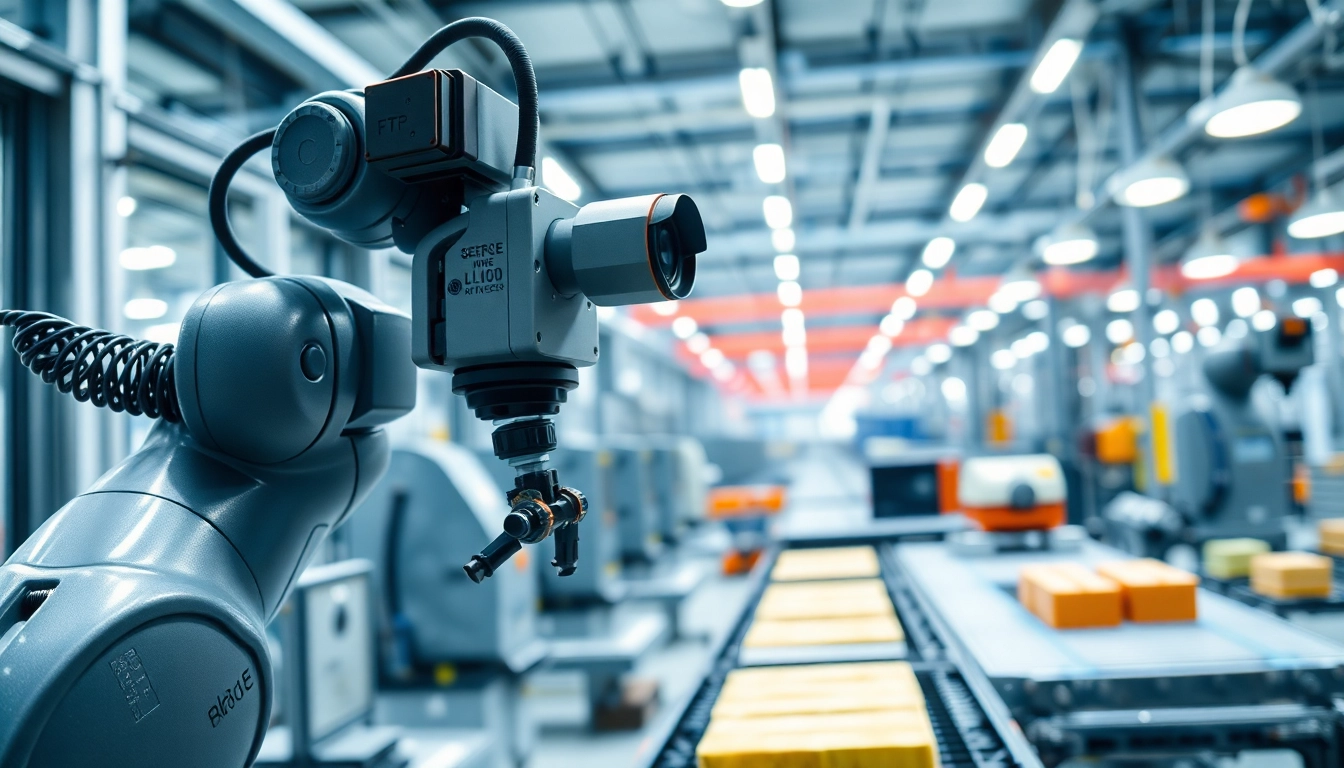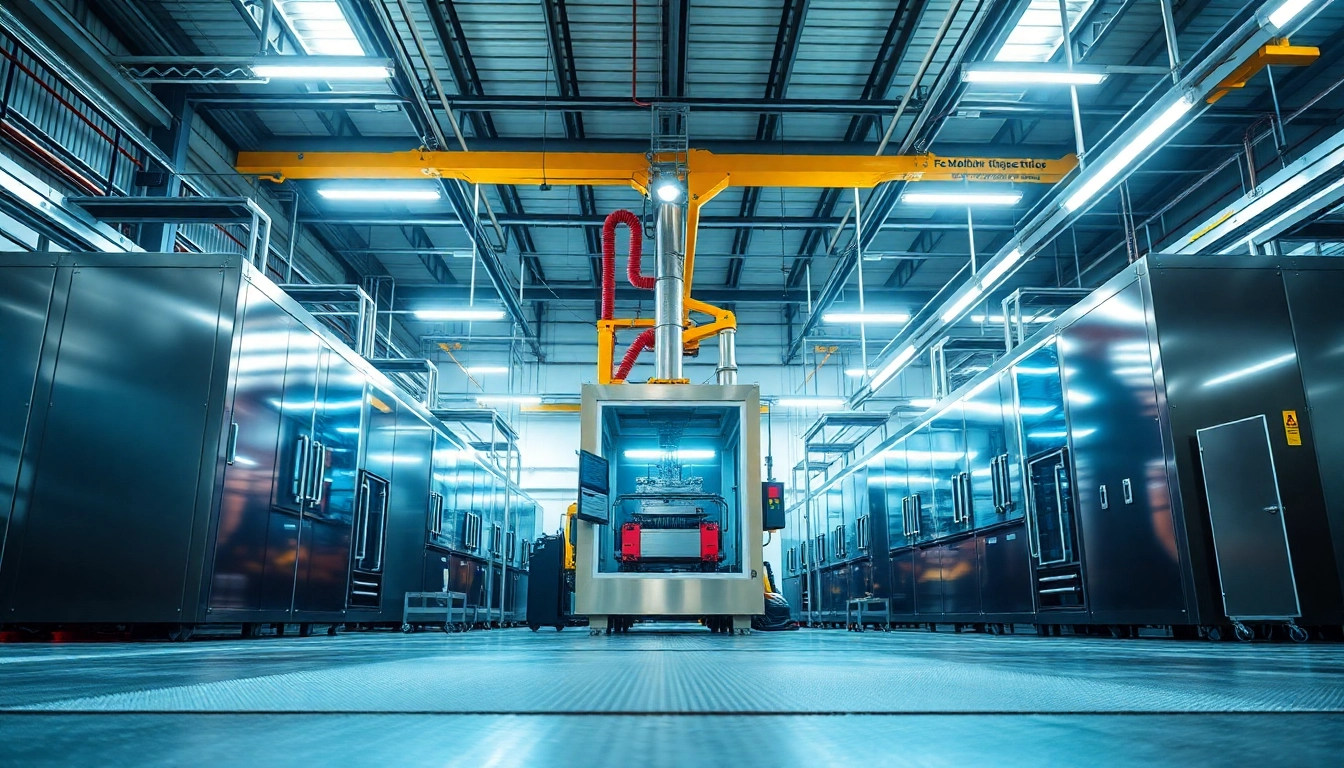What is Machine Vision?
Definition and Overview of Machine Vision
Machine vision refers to a technology that enables computers and industrial equipment to interpret visual information, akin to human sight. This technology encompasses a range of systems and methodologies aimed at automating various processes based on visual inputs. Due to advancements in sensors, cameras, and image processing algorithms, machine vision systems have evolved significantly, allowing for more efficient and accurate inspections compared to manual processes. Applications of machine vision can be found in diverse settings from manufacturing to healthcare, improving operational efficiency and quality control.
Key Technologies Driving Machine Vision
The foundation of machine vision lies in several key technologies including:
- Cameras and Sensors: These components capture images that need to be processed. Cameras can vary from simple 2D devices to advanced 3D imaging systems, depending on the application.
- Lighting: Proper lighting is crucial for capturing high-quality images. Various lighting techniques, including structured, back, and diffuse lighting, can enhance the ability of sensors to detect features.
- Image Processing Software: This software executes complex algorithms that analyze images for specific characteristics, such as defects, measurements, and more.
- Artificial Intelligence and Machine Learning: AI technologies can enhance machine vision systems by enabling them to learn from past data, improving their accuracy over time.
Differences Between Machine Vision and Computer Vision
While machine vision and computer vision both involve image processing, they serve different purposes:
- Machine Vision: Primarily focused on industrial applications, machine vision is about automating inspection tasks and guiding machinery. It usually demands high precision in a structured environment.
- Computer Vision: This broader field encompasses enabling computers to interpret visual information. Applications can range from security systems to autonomous vehicles and do not always require the same level of precision found in machine vision.
Core Principles of Machine Vision
Image Capture Techniques
Image capture is the first step in any machine vision system. Various techniques employed include:
- 2D Imaging: Utilizing standard cameras to capture flat images, which is suitable for identifying defects or orientation in a single plane.
- 3D Imaging: Employing specialized cameras and sensors, such as laser triangulation or structured light, to gather depth information. This is critical in applications requiring precise measurements and object recognition.
- Multispectral Imaging: Capturing images across different wavelengths, providing insights not visible to the human eye and useful in industries like agriculture and food safety.
Processing Visual Data with Algorithms
Once the image is captured, sophisticated algorithms process the visual data to identify patterns, detect anomalies, or measure specific attributes:
- Edge Detection: A technique used to identify boundaries within images, critical for shape recognition.
- Pattern Recognition: Algorithms that determine if a captured image matches a predefined template or pattern, essential in quality control.
- Feature Extraction: Key characteristics of a product are extracted to inform decisions about its quality or suitability for further processing.
Decision-Making in Automated Systems
Decisions based on processed visual data can be binary (pass/fail) or qualitative (grading). These decisions are vital in various applications:
- Quality Control: In manufacturing, machines can automatically reject defective products after analyzing images, reducing waste and ensuring product integrity.
- Automated Logistics: Systems can dynamically adjust actions such as sorting packages based on the visual data of barcodes or shipping labels.
- Robotic Handling: Robots equipped with vision systems can identify and manipulate objects, enhancing efficiency in tasks traditionally performed by humans.
Applications of Machine Vision Across Industries
Quality Control and Inspection
One of the primary applications of machine vision is in quality control, where it allows for consistent and reliable inspections:
- Defect Detection: Automated systems can quickly identify defects in products, even those invisible to human inspectors.
- Measurement: Machine vision systems can measure dimensions and verify tolerances with higher precision compared to manual verifications.
- Documentation: Visual records of the inspection process can be maintained, providing accountability and traceability.
Automation in Manufacturing
Machine vision plays a critical role in automating manufacturing processes:
- Assembly Verification: Vision systems can confirm the correct assembly of components, ensuring that products meet specifications before leaving the line.
- Material Handling: Smart vision systems can track items moving through production, enabling just-in-time manufacturing and reducing inventory costs.
- Operational Efficiency: Automated systems can operate continuously, drastically improving throughput and reducing human error.
Innovations in Robotics and AI
Recent innovations have enhanced machine vision’s role in robotics and AI applications:
- Autonomous Vehicles: Machine vision technologies enable vehicles to detect and respond to changes in their environment, contributing to the development of self-driving technology.
- Collaborative Robots: Cobots can work alongside humans, utilizing vision systems to adapt to dynamic environments without causing safety risks.
- AI Integration: Machine learning algorithms empower vision systems to improve over time, learning from past images to enhance accuracy and adaptability.
Choosing the Right Machine Vision System
Types of Machine Vision Systems
Choosing the correct machine vision system involves understanding the different types available:
- 1D Systems: Used for linear inspections, such as measuring the lengths of objects or reading barcodes.
- 2D Systems: Traditional systems that analyze flat images, often employed in simple detection tasks.
- 3D Systems: Designed for applications requiring depth perception, such as robotics and complex inspections.
- Multispectral Systems: Useful for applications needing more comprehensive analysis by utilizing multiple wavelength ranges.
Factors to Consider in System Selection
When selecting a machine vision system, several factors must be taken into consideration:
- Application Needs: Understanding the specific requirements of the task—whether it calls for simple verification or complex analysis—is paramount.
- Environment: The surrounding conditions (lighting, temperature, etc.) can affect how well a system performs, making environmental compatibility crucial.
- Budget: While more advanced systems offer greater features, it’s important to balance the investment against expected returns and process improvements.
Integration with Existing Technologies
Successful deployment of machine vision systems often hinges on how well they integrate with existing technologies:
- Software Compatibility: The ability of vision systems to interface smoothly with manufacturing software and ERP systems can ease the transition.
- Hardware Synergy: Ensuring that the new system can seamlessly interact with current machinery processes is vital for maintaining productivity.
- Scalability: Choosing a scalable solution means that future expansions to operations won’t necessitate complete system overhauls.
Future Trends and Challenges in Machine Vision
Advancements in AI and Deep Learning
The intersection of machine vision and artificial intelligence is driving new levels of efficiency and capability:
- Automated Learning: AI algorithms can become proficient in recognizing complex patterns without the need for extensive rule-based coding.
- Real-Time Processing: With improvements in computation power, systems can analyze and act on visual data in real-time, which is vital for time-sensitive applications.
- Improved Accuracy: Deep learning models have shown superior performance in complex visual tasks, reducing false positives and improving overall reliability.
Addressing Common Limitations
While machine vision systems present numerous advantages, challenges still persist:
- Lighting Variability: Adjusting to different lighting conditions can be difficult; implementing adaptive lighting solutions can mitigate this issue.
- Complexity of Setup: Initial setup could be time-consuming, requiring expertise in both hardware and software; investing in training can ease deployment.
- Data Management: The volume of data generated can be overwhelming; organizations need solid data management strategies to handle and analyze this information effectively.
Predictions for Machine Vision Adoption
Looking ahead, the adoption of machine vision technology is expected to accelerate:
- Increased Investement: As technology becomes increasingly affordable, more companies will incorporate machine vision into their operations to enhance efficiency.
- Broader Applications: New innovations will lead to the application of machine vision in areas currently unexplored, such as agriculture and environmental monitoring.
- Integration with IoT: The confluence of machine vision and Internet of Things (IoT) technologies will create smarter, more interconnected systems.



